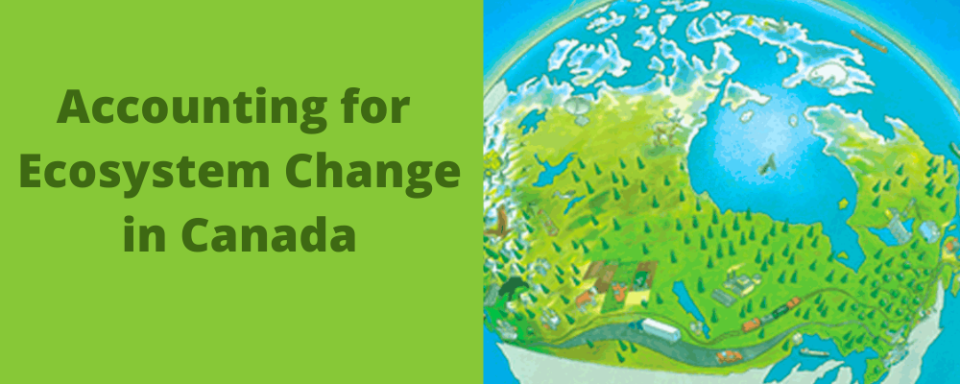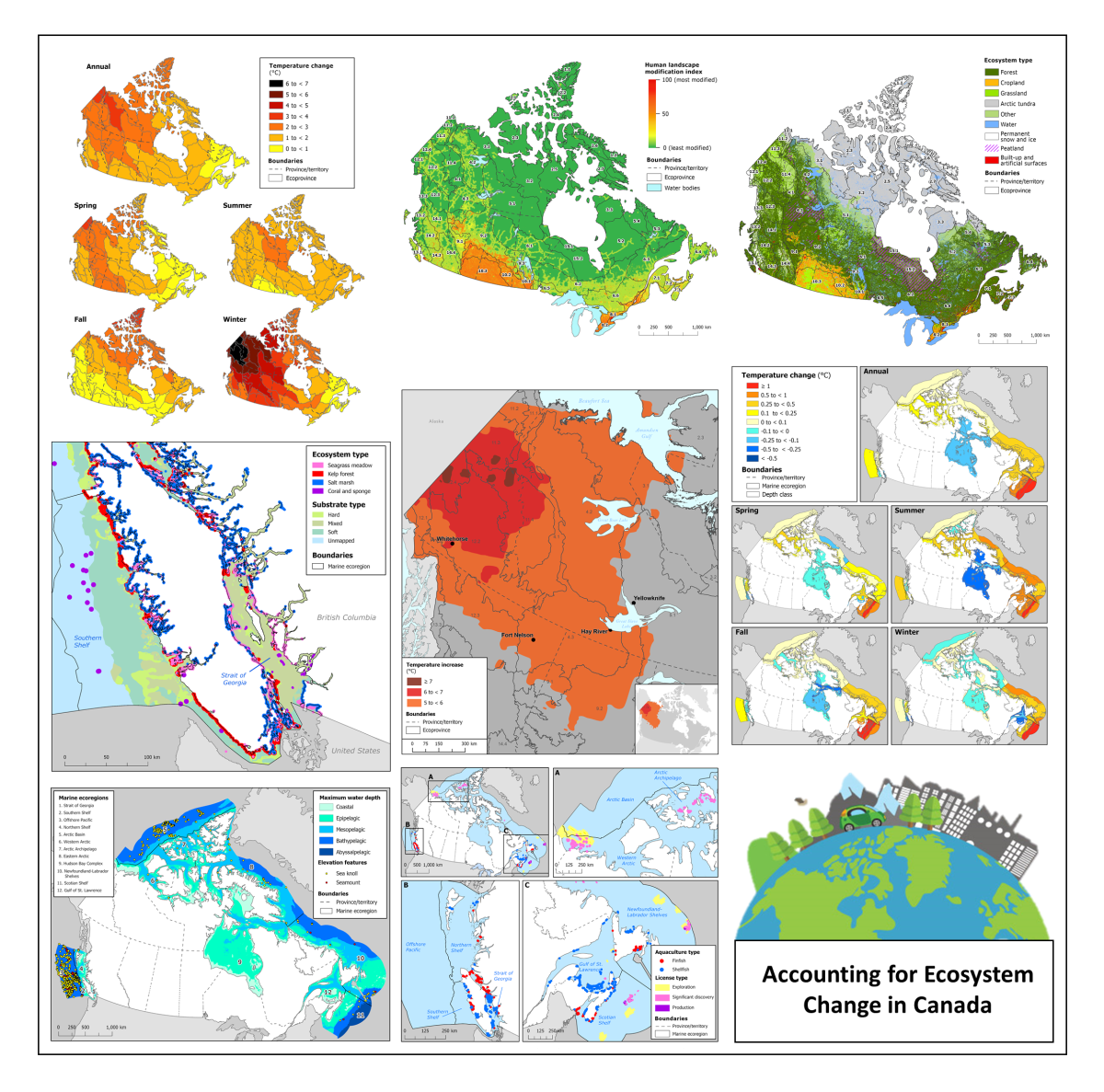Accounting for Ecosystem Change in Canada

On January 25, 2022, Statistics Canada released new products on ecosystem accounting. The report Human Activity and the Environment: Accounting for ecosystem change in Canada is an initial attempt to account for ecosystems. It was accompanied by thematic map and infographic products.
The latest release provides up-to-date statistics on the extent and condition of Canada’s terrestrial and marine ecosystems, as well as estimates of the supply and use of selected ecosystem services.
Over half of the country is covered by forest and tundra, while other important areas include wetlands, grasslands, farmlands and settlements. All areas of Canada’s landmass have experienced increases in average annual and seasonal air temperatures from 1948 to 2016, with important regional variations. The report also included new compilations of marine and coastal ecosystem types, including by bathymetric zone and bioregion, including seagrass meadow, kelp forest, coral reef and salt marsh.
Selected abiotic, biotic and landscape and seascape ecosystem condition characteristics are covered, including water storage and yield, ambient air quality, forest disturbance, urban greenness, landscape fragmentation and modification, sea surface temperature, salinity, species stock status, sea ice and seascape modification. Estimates are also provided for the physical supply of provisioning services (e.g., crop production, fodder production, aquaculture production, wood production, wild animal harvests and water supply), regulating services (e.g., carbon sequestration and storage and air filtration) and use of recreation-related services.
Further work is ongoing to assess change and develop quantitative measures and valuations to provide a more complete picture of the relationship between the economy, society and the environment and how we measure well-being and social progress. These issues will be the focus of further efforts as we embark on the development of a new Census of Environment program, which will provide access to integrated environmental accounts and regional profiles.
Read more about the study “Accounting for ecosystem change in Canada” here.

This article was contributed by Jennie Wang and Francois Soulard from Statistics Canada
